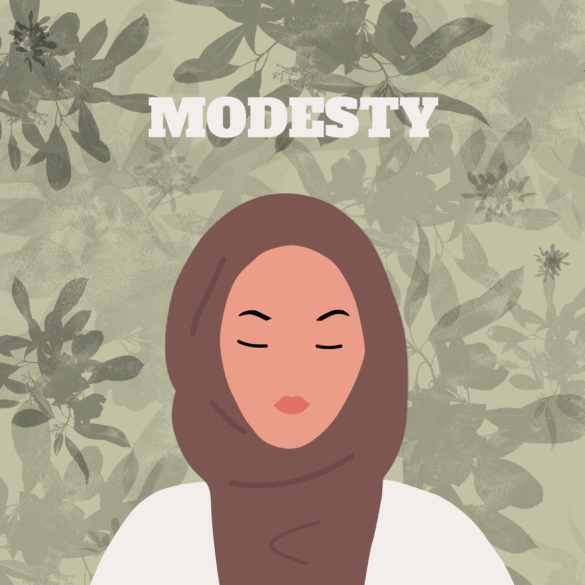There’s an increasing market for modest fashion, and many popular designers are participating.
Necklines are rising nearly as fast as popularity for the latest vogue: modest fashion. In the same way that individuals hold varied interpretations of modesty as a value, the definition of modest fashion is left to personal perception.
“I define modest fashion as a personal awareness of how clothing covers the body within your own level of comfort,” says Audrey Robbins, professor of fashion merchandising and apparel design at Ball State University.
So, what one person considers to be modest could be seen as immodest to another. In general, modest fashion is characterized by looser fitting attire, higher necklines, lower hemlines, and more overall coverage of the body.
Modest fashion influencers garner hundreds of thousands of followers from around the world. Instagram pages such as Modest Gals, the Minimalist Wardrobe, Monroe Steele , and twin sister duo Reese & Molly Blutstein are constantly serving looks. Fashion and lifestyle bloggers such as With Love, Leena, Downtown Demure and Sincerely Maryam bring fresh, personalized perspectives to the modest fashion community. These fashionistas and self-dubbed ‘hijabis’ know how to show out without showing too much.
While modest fashion found its footing among Muslim consumers, who spent an estimated $277 billion on modest clothing in 2019, the style has been reaching beyond religious boundaries. Exact reasons for dressing modestly vary between individuals, but most influencers, secular and not, attribute their preference for modesty to a taste for elegance, class and even minimalism.
The industry for modest fashion has been growing exponentially in recent years. Though the pandemic has burdened the market’s economy, a report by Dinar Standard, which examines trends in Muslim fashion, projects consumer spending on modest clothing to reach $311 billion by 2024, a 28% increase from 2015. According to Robbins, this can be largely attributed to luxury and designer brands who are now participating in the modest fashion market.
In 2015, Japan-based retailer Uniqlo partnered with UK designer Hana Tajima to create a fashion line promoting hijabs and abayas, or robe-like, ankle-length dresses. In the following years, prominent companies such as Nike and H&M followed with their own lines featuring similar modest options of hijabs and dresses. Dolce & Gabbana’s Spring 2021 collection, “Patchwork di Sicilia,” spotlights high-end turbans bearing prints inspired by the various cultures on the Italian island. Some smaller-scale apparel shops are following suit and incorporating more modest clothing designs.
Exposure has also helped propel modest fashion onto the world stage, such as the first international Modest Fashion Week held in Istanbul, Turkey in 2016. Modanisa, a fashion company catering to Islamic attire, hosted the monumental event which featured world renowned designers, notable bloggers, and hijab fashion models. The event launched a series of Modest Fashion Weeks, with five more shows in London, Dubai, Jakarta, and Amsterdam. In 2019 the United States hosted its first international modest fashion show in Miami, which is now annual.
The prosperity of the modest fashion industry seems to promise a more inclusive future, where individuals have the right to bare, and not to bare, as they please.





